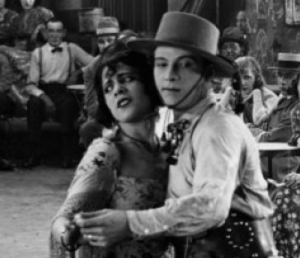
If you’ve never danced Argentine Tango before, or maybe never danced at all before, then you could be in for a treat! Argentine Tango is a beautiful dance, performed with a partner, and it requires co-operation. We talk about there being ‘leaders’ and ‘followers’ but these are two different roles without which the tango dance cannot happen. So, it is not the case that leaders are always in charge and that followers ‘must’ do what the leader required. Each person contributes to the dance according to their role.
If you want to learn Argentine Tango, being an absolute beginner is OK. Learning any new task can be daunting but in our tango dance classes for beginners, we start you off with the basics and build up over weeks (and months) until you become more confident with your dancing. You don’t need to have any dance experience with other styles before you start. In fact knowing other dances can sometimes get in the way, because you may arrive with a preconception of ‘how to dance’ which may need to be modified for Argentine tango.
Click here to find out more about our Argentine Tango beginners dance classes workshops and courses.
The Four Basic Elements of All Dances
If you go to any beginners dance classes, your dance teacher should be teaching you the four things listed below, and ideally teaching you these things from your first lesson onwards.
Musicality
In my humble opinion, musicality, or the ability to dance to a beat, a syncopation, or an element of melody is the key element of dancing. If you cannot hear the regular beat of a tune, or pick out opportunities for syncopated movements, or be able to dance to elements of the melody, then are you really dancing at all?
In our dance classes, beginners are introduced to basic musicality right from the start, so that you begin to really hear the music of the Argentine tango style as soon as possible. We start off helping you move to the basic beat first. This may take a little time to embed into your dance, but we follow up by helping you identify ‘contra beats’ which are used for syncopated movements, and finally at the highest levels, we will introduce you to dancing to melodic elements, and the emotion of the music. It can take time to be truly musical in your dance, but we will encourage you right from day one.
Technique
Another important aspect of any dance is technique. As with any performance based task, there are right ways of doing things and wrong ways. The wrong ways often make it harder in long run to take on board more complex actions.
In our dance classes for beginners and improvers, we will teach you the technique of how to achieve the tango movements we teach. We use ‘body mechanics’ to explain what is happening to your posture, your positioning, and why a particular technique (even if it seems ‘strange’ at first) makes a particular dance movement easier to perform.
Often it’s not only beginners who struggle with technique, but other levels of dancer where they have not quite got their technique right and are therefore struggling to progress to more complex elements of the dance. Using incorrect technique will limit a dancers progress towards full competence.
Choreography
All dances have elements of choreography, including Argentine Tango, but with tango it is an improvisational dance. This means the leader is creating the structure of the dance ‘on the fly’ without following any long set sequence of movements. Instead they base their movement on the music, how they feel, and generally what small bits of choreography they can remember during the dance.
The choreographic elements of Argentine Tango can be relatively small movements which are then ‘mixed and matched’ by the leader in whatever way they feel is right. The follower therefore cannot anticipate too much, and should simply respond to the input the leader is conveying.
This is quite a different (and more challenging) approach to, for example, a ballroom sequence dance where an entire routine is mapped out before hand, and where the leaders and followers can learn their respective parts independently, then come together to form a ‘perfect’ dance.
In our Argentine Tango beginners dance classes we teach each element of choreography, have you practise those elements separately, and then have you deliberately practise integrating them into the other elements which you already know so that your overall dance capability expands gradually. After all, it’s no point becoming good at performing an Argentine Tango figure in a ‘static’ way, without being able to weave it into a whole dance…
Style
Style is what allows you to identify the difference between a Ballroom Jive and a Latin Samba. It’s the ‘look and feel of a dance’. Within the overall label of Argentine Tango their are a number of different styles, but all sharing many common elements and techniques.
For our dance classes for beginners and improvers we start off teaching Tango Salon style, but run separate workshops for the Tango Vals (waltz) and Tango Milonga (quickstep) styles of tango. These three styles are the most suitable for dancing at popular traditional tango social dances. There are many other styles of Argentine tango, some from history (i.e. pre ‘tango’) and some more modern styles (fantasia, escenario, and nuevo) which draw upon tango salon but also mix elements of contemporary dance, ballet, and gymnastics and make these styles more suitable for show dancing rather than social dancing.




